The Real Thing on the Radio: Coca-Cola and the Soundtrack of a Generation On July 10, 1965, the pages of Billboard magazine lit up with a headl
The Real Thing on the Radio: Coca-Cola and the Soundtrack of a Generation
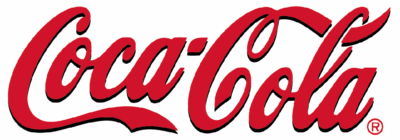 On July 10, 1965, the pages of Billboard magazine lit up with a headline that would send ripples through the pop music and advertising worlds: “Coca-Cola Launches Teen Spot Drive.” It marked the official launch of the soft drink giant’s most ambitious radio campaign ever—one that enlisted a rotating cast of pop stars to sing a jingle that would become as iconic as any chart-topper: “Things Go Better With Coke.”
On July 10, 1965, the pages of Billboard magazine lit up with a headline that would send ripples through the pop music and advertising worlds: “Coca-Cola Launches Teen Spot Drive.” It marked the official launch of the soft drink giant’s most ambitious radio campaign ever—one that enlisted a rotating cast of pop stars to sing a jingle that would become as iconic as any chart-topper: “Things Go Better With Coke.”
From that moment on, Coca-Cola didn’t just market to the youth of America—it sang to them. With every 45 RPM promo, every velvet-voiced jingle spun on AM radio, the brand embedded itself deeper into the pop culture fabric. This is the story of how Coca-Cola hit the airwaves, found its groove, and never looked back.
In the golden age of Top 40 radio, when the airwaves were thick with the sounds of British Invasion beats and Motown magic, one brand managed to bottle the energy of an era: Coca-Cola. Long before TikTok collabs and pop-star-sponsored sodas, Coca-Cola was blending branding and music in a way that not only captured ears—it captured hearts. This is the story of how Coke went from sponsor to sonic icon.
Popping the Cap: Coca-Cola’s Radio Roots
Coke’s love affair with the microphone dates back to the 1920s, when it launched The Coca-Cola Hour, a radio program delivering orchestral music to households across America. By the 1940s, the brand had established itself as a premier sponsor of swing orchestras and campus big bands, with announcements like “The Coca-Cola spotlight points with pride to…” becoming a familiar refrain.
For bands, a Coke air spot wasn’t just a gig—it was a golden ticket to national exposure. Even then, Coke understood that music moved people, and they invested in that emotional currency early.
A Sonic Shift: Enter the Teen Market
Fast forward to the revolutionary 1960s. With transistor radios in every teen’s pocket and pop charts exploding with new talent, Coca-Cola’s strategy got a remix. The brand shifted gears with the launch of the “Things Go Better With Coke” jingle—a catchy, upbeat tune that could be tailored by recording artists to reflect their own unique sound.
At the center of this push was William Backer, associate creative director at McCann-Erickson. Backer had a vision: don’t just license songs—make jingles sound like hits. He kept each artist’s individuality intact by using their own producers, favorite session musicians, and original studios. This way, the jingles didn’t just sound like the artist—they were the artist.
The Jingle-Chart Invasion
Coca-Cola’s teen-targeted campaign wasn’t small potatoes. As previously reported in the Motor City Radio Flashbacks archives, the brand surged to become the #1 radio spot buyer in 1965, surpassing its previous seventh-place ranking from just a year earlier. The campaign’s price tag? Rumored to be hovering around $10 million—a massive investment for the time.
McCann-Erickson saturated the nation’s Top 40 stations across 62 major markets, placing these sing-along-worthy spots in heavy rotation. And the response? Phenomenal. Some listeners even called radio stations to request the jingles—a nearly unheard-of occurrence that speaks volumes about their popularity. One jingle even cracked a station’s Top 40 chart.
Stars for Sale: A Who’s Who of Coke Crooners
From soul to surf rock, the artist lineup read like a dream concert:
- The Supremes
- Tom Jones
- Roy Orbison
- Lesley Gore
- The Four Seasons
- Petula Clark
- Freddie & The Dreamers
- The Drifters
- Nancy Sinatra
- Gary Lewis & The Playboys
- Wayne Fontana & The Mindbenders
- The Vogues and many, many more.
These weren’t just quick endorsements—they were fully produced, high-fidelity recordings that blurred the line between commercial and hit single. As Backer put it, “We feel we are offering two stars to the consumer—one is Coca-Cola and the other is the performer.”
Coca Cola | 18 Radio Spots (1960s) | Things Go Better With Coke
Audio Digitally Remastered by USA Radio Museum
Spotlight: Petula Clark – Popping the Top on a New Era
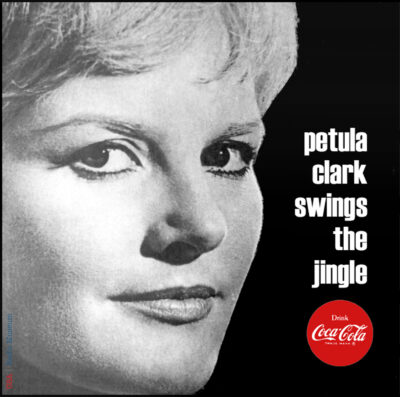 Before the jingle became a cultural juggernaut, Petula Clark set the tone—literally—in 1965. In the early rollout of Coca-Cola’s “Things Go Better With Coke” campaign, Clark was one of the first artists tapped to give the slogan a voice. And not just any voice: she sang the jingle to the melody of her global hit “Downtown”, instantly connecting the fizzy optimism of the soft drink with the youthful energy of the pop charts.
Before the jingle became a cultural juggernaut, Petula Clark set the tone—literally—in 1965. In the early rollout of Coca-Cola’s “Things Go Better With Coke” campaign, Clark was one of the first artists tapped to give the slogan a voice. And not just any voice: she sang the jingle to the melody of her global hit “Downtown”, instantly connecting the fizzy optimism of the soft drink with the youthful energy of the pop charts.
The brilliance of this move can’t be overstated. By letting Clark reinterpret her signature tune, Coca-Cola tapped directly into the hearts of the teen market—already in love with the song and now humming along to a bubbly new version. It wasn’t just a commercial; it was clever pop alchemy.
This moment signaled Coca-Cola’s shift from traditional radio spots to something more musical, more memorable, and unmistakably modern. And with that joyful, soaring chorus, Petula Clark didn’t just promote a soda—she helped launch one of the most iconic ad campaigns of the 20th century.
Coca Cola | Petula Clark (ala “Downtown”) | Things Go Better With Coke
Audio Digitally Remastered by USA Radio Museum
Radio Royalty Meets Branding Brilliance
What made this campaign revolutionary was how it felt. Coke wasn’t pushing soda—it was selling a feeling, a vibe, a soundtrack. By aligning with artists who spoke to teens, they earned cultural credibility. Teens didn’t just hear the brand, they felt it was speaking their language.
This pioneering music marketing set the template for today’s artist-brand partnerships. Beyoncé and Pepsi? Travis Scott and McDonald’s? They owe a fizzing debt to what Coke began in the sixties.
Echoes Through the Bottle: Why It Still Matters
The Coke jingles of the ’60s weren’t just good marketing—they became part of listeners’ lives. They sparked memories, inspired fan devotion, and were inseparable from the golden age of AM radio. Whether it was Petula Clark turning “Downtown” into a Coke celebration or The Supremes sweetening their harmonies for soda, these artists helped make Coca-Cola more than a drink. They made it a vibe.
Bubbling Over: Coca-Cola’s Jingle Boom in the Late ’60s
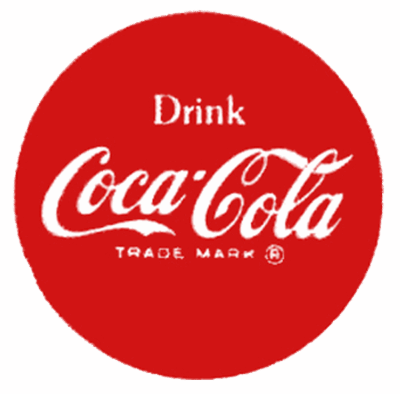 By 1967, Coca-Cola’s fizzy fusion of pop music and product had gone from ambitious campaign to cultural phenomenon. On June 29, a fresh batch of jingles rolled out nationwide, adding Sandy Posey and The Young Rascals to an already star-studded lineup that now included Nancy Sinatra, Ray Charles, The Troggs, Joe Tex, and Los Bravos, among others.
By 1967, Coca-Cola’s fizzy fusion of pop music and product had gone from ambitious campaign to cultural phenomenon. On June 29, a fresh batch of jingles rolled out nationwide, adding Sandy Posey and The Young Rascals to an already star-studded lineup that now included Nancy Sinatra, Ray Charles, The Troggs, Joe Tex, and Los Bravos, among others.
According to Coca-Cola brand manager Richard Harvey, the goal was simple but sharp: get the product “where the action is… in this growing under-25 soft drink market.” And the action was definitely there. Radio DJs were inundated with listener requests—not for hit singles, but for Coke jingles. Some stations even received fan mail requesting transcriptions of the commercials.
The campaign’s impact wasn’t just commercial—it was critical. The Coca-Cola spots earned two Clio Awards, along with other national and regional recognitions, solidifying their place as some of the most innovative advertising of the era. The fact that these branded jingles brought more exposure to rising artists than traditional airplay made the line between entertainment and advertising almost invisible.
And through it all, William Backer’s creative direction kept the campaign grounded in authenticity. His belief that “two stars” were being presented—the performer and the product—made the difference between a commercial and a cultural moment.
Vinyl, Not Tape: Spinning Coca-Cola on the Turntable
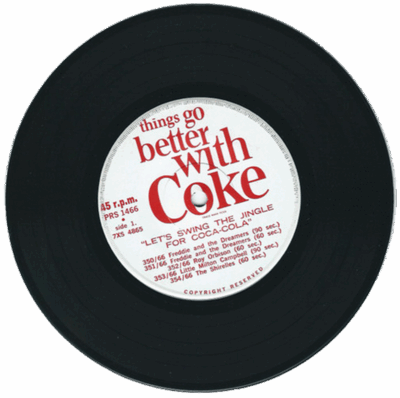 While most advertisers in the 1960s mailed out radio spots on reel-to-reel tape, Coca-Cola marched to a different beat—pressed in pure vinyl. Their jingles weren’t just airplay-ready, they were jukebox-worthy. These 7-inch, 45 RPM records were shipped directly to radio stations, often labeled “Demonstration Only” or “Not for Sale,” and they featured top pop artists performing their personalized takes on “Things Go Better With Coke.”
While most advertisers in the 1960s mailed out radio spots on reel-to-reel tape, Coca-Cola marched to a different beat—pressed in pure vinyl. Their jingles weren’t just airplay-ready, they were jukebox-worthy. These 7-inch, 45 RPM records were shipped directly to radio stations, often labeled “Demonstration Only” or “Not for Sale,” and they featured top pop artists performing their personalized takes on “Things Go Better With Coke.”
These promo singles were more than tools for airtime—they were collectibles. DJs and station managers often spun them outside ad breaks due to sheer listener demand. And if you were lucky, you’d catch Roy Orbison, Lesley Gore, Gary Lewis, or Aretha Franklin belting out Coke’s jingle with the same energy as a chart-topping single.
As for artist compensation—yes, the performers were indeed paid for their participation. While exact figures are hard to pin down, artists were typically compensated through standard commercial recording contracts negotiated by their labels, managers, or directly through McCann-Erickson, Coca-Cola’s ad agency. These deals often included:
- Studio time and session fees (especially since artists used their own arrangers and musicians),
- Licensing fees for adapting melodies of their hits,
- And in some cases, royalties or flat promotional fees, depending on the artist’s stature and contract terms.
It wasn’t just a paycheck, though—it was also a savvy career move. Many artists saw these jingles as a way to expand their exposure, especially with Coke’s massive radio saturation. For younger or international acts, it was a golden ticket into the American teen market.
So yes, Coke didn’t just borrow their voices—they backed it up with checks and chart-worthy airtime.
The Coca-Cola Company’s decision to press these commercials onto physical vinyl only underscored how seriously they took music as a brand-building strategy. It wasn’t just about selling soda—it was about becoming part of the cultural conversation, track by track, spin by spin.
Harmony in a Bottle: From Jingles to Global Unity
As the 1960s gave way to a new decade, Coca-Cola’s musical marketing didn’t fizzle out—it evolved. The “Things Go Better With Coke” campaign, which had already become a radio staple, carried its momentum into the early 1970s, continuing to feature pop artists who resonated with the youth market. Ray Charles, Aretha Franklin, The Box Tops, Gary Lewis, and Lesley Gore were just a few of the voices that kept Coke’s message alive on the airwaves, pressed onto those iconic 45 RPM vinyl promos.
But in 1971, Coca-Cola took a bold leap from jingles to a global anthem with the launch of the “Hilltop” campaign—a moment that would redefine advertising history.
“I’d Like to Buy the World a Coke”: A New Kind of Jingle
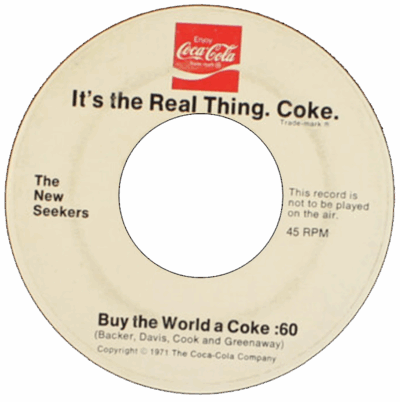 The idea was born in an Irish airport, where William Backer, creative director at McCann-Erickson, observed strangers bonding over bottles of Coke. That spark led to a simple, powerful lyric: “I’d like to buy the world a Coke and keep it company.” Backer teamed up with songwriters Roger Cook, Roger Greenaway, and Billy Davis to transform the line into a full-fledged song.
The idea was born in an Irish airport, where William Backer, creative director at McCann-Erickson, observed strangers bonding over bottles of Coke. That spark led to a simple, powerful lyric: “I’d like to buy the world a Coke and keep it company.” Backer teamed up with songwriters Roger Cook, Roger Greenaway, and Billy Davis to transform the line into a full-fledged song.
The result was the now-legendary “Hilltop” commercial, filmed on a sun-drenched hillside outside Rome. Featuring a multicultural chorus of young people from around the world, the ad delivered a message of unity, peace, and shared humanity—all through the lens of a Coke bottle.
The song, later re-recorded as “I’d Like to Teach the World to Sing (In Perfect Harmony)” by The New Seekers, became a global hit, charting in both the U.S. and the U.K. It was the first time a commercial jingle had successfully crossed over into mainstream pop culture as a standalone single.
From Pop Stars to People Power
While the earlier Coke jingles leaned on the star power of individual artists, “Hilltop” shifted the spotlight to collective harmony. It wasn’t about one voice—it was about many. And yet, the DNA of the campaign remained the same: music as a bridge, Coke as the connector.
This transition marked the end of an era for the artist-specific jingles, but it also elevated Coca-Cola’s brand identity to something more aspirational. It wasn’t just “the real thing”—it was the unifying thing.
Coca Cola | The New Seekers | It’s The Real Thing (1971)
Audio Digitally Remastered by USA Radio Museum
A USARM Footnote:
While Coca-Cola enlisted a chorus of pop stars to harmonize its jingle-driven campaign in the 1960s—embedding itself in AM radio culture—Pepsi Cola countered with a bold lifestyle repositioning. In 1963, Pepsi launched “The Pepsi Generation,” targeting youth with a sleek, forward-looking identity and the slogan “For Those Who Think Young.” By the 1980s, Pepsi leaned fully into celebrity power—most famously with Michael Jackson—while Coca-Cola moved toward universal themes like global unity. Two rival strategies, each carbonated with cultural influence, battling for branding supremacy sip by sip.
Coca Cola | Max Headroom | 1985
Audio Digitally Remastered by USA Radio Museum
Final Sip: When Coca-Cola Owned the Airwaves
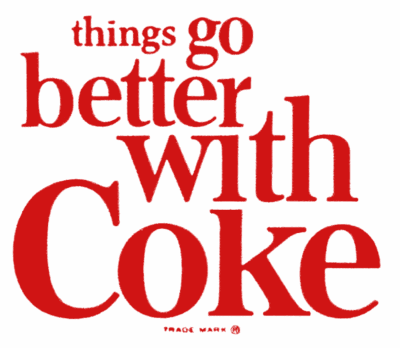 From orchestras in the 1920s to soul queens and British rockers in the swinging ’60s, Coca-Cola didn’t just advertise—it embedded itself in the rhythm of everyday life. Through vinyl jingles, cultural crossovers, and a million transistor radios, it became more than a beverage. It was the sound of summer, the hum between hits, the fizz behind the voice on the dial.
From orchestras in the 1920s to soul queens and British rockers in the swinging ’60s, Coca-Cola didn’t just advertise—it embedded itself in the rhythm of everyday life. Through vinyl jingles, cultural crossovers, and a million transistor radios, it became more than a beverage. It was the sound of summer, the hum between hits, the fizz behind the voice on the dial.
With “Things Go Better With Coke,” Coca-Cola pulled off something Pepsi never quite matched: it turned its ad campaign into a pop culture phenomenon. It didn’t just sponsor music—it became part of the music. Petula Clark’s “Downtown” wasn’t just a song—it became a Coke anthem. Ray Charles’s voice didn’t just sell soda—it poured soul into every sip.
By the early 1970s, the baton passed to the next great jingle—“I’d Like to Buy the World a Coke”—and with it, the echoes of a bygone era faded gently into harmony. But make no mistake: in the golden age of radio, Coca-Cola wasn’t just the real thing—it was the sound of a generation.
So here’s to the vinyl jingles, to DJs flipping Coke-labeled 45s, and to a time when soda pop met pop music and created something unforgettable. When the music played, when the bottle opened, and with every drop poured, the world seemed just a little sweeter.
_____________________
A USARM Viewing Tip: On your PC? Mouse/click over each image for expanded views. On your mobile or tablet device? Finger-tap all the above images inside the post and stretch image across your device’s screen for LARGEST digitized view.

